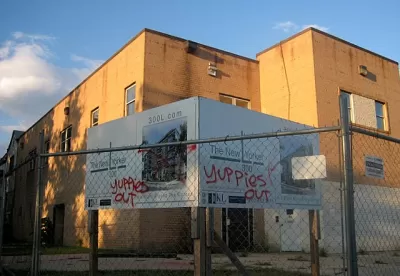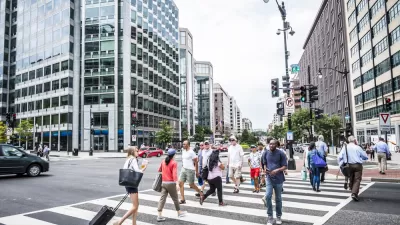Florida discusses a recent study that emphasizes how new the back-to-the-city movement is, how white it is, and what that means for the people it pushes out.

By now it's obvious even to those outside the urbanist community that America's cities are roaring back. Richard Florida writes, "A new study by my University of Toronto colleague Nathaniel Baum-Snow and Daniel Hartley of the Federal Reserve of Chicago takes the deepest dive into this issue yet, tracing the back-to-the-city movement across U.S. cities and metros."
For one thing, the study finds that the current urban renaissance only really began around 2000. "In fact, during [the time between 1980 and 2000], both affluent and less affluent residents continued to leave cities, including educated and working class whites. This dynamic only began to change sharply after 2000, when Americans began flowing back to urban centers."
This is a win-win for the well-off white people who make up the bulk of those moving back. "Re-urbanization has enabled affluent whites to simultaneously reduce their commutes, locate in closer proximity to higher paying economic opportunities, and to have privileged access to the amenities that come along with urban living."
Florida emphasizes that central areas, at least, still don't match suburbs after decades of white flight. "Still, even with this back-to-the-city incursion of the educated and affluent, urban neighborhoods remain less affluent and less white than the suburbs."
On displacement, he writes, "This outflow of the less affluent is especially troubling because urban centers offer both better job opportunities and greater levels of the kinds of amenities that can help boost their wages and increase their prospects of economic mobility." In other words, the "outer cities" of the future might be even worse off than the inner cities of decades past.
FULL STORY: The Downsides of the Back-to-the-City Movement

Montreal Mall to Become 6,000 Housing Units
Place Versailles will be transformed into a mixed-use complex over the next 25 years.

Planetizen Federal Action Tracker
A weekly monitor of how Trump’s orders and actions are impacting planners and planning in America.

Four Reasons Urban Planners Can’t Ignore AI
It’s no longer a question of whether AI will shape planning, but how. That how is up to us.

Bend, Deschutes County Move to Restrict Major Homeless Encampment
City and county officials are closing off portions of an area known as Juniper Ridge where many unhoused residents find shelter, hoping to direct people to housing and supportive services.

High Housing Costs Driving Down Transit Ridership in LA
When neighborhoods gentrify and displace lower-income residents, transit ridership suffers, new research shows.

Iowa Legalizes Accessory Dwelling Units
A new law will allow property owners to build ADUs on single-family lots starting on July 1.
Urban Design for Planners 1: Software Tools
This six-course series explores essential urban design concepts using open source software and equips planners with the tools they need to participate fully in the urban design process.
Planning for Universal Design
Learn the tools for implementing Universal Design in planning regulations.
City of Camden Redevelopment Agency
City of Astoria
Transportation Research & Education Center (TREC) at Portland State University
City of Camden Redevelopment Agency
Municipality of Princeton (NJ)
Regional Transportation Commission of Southern Nevada





























